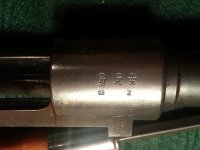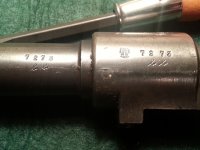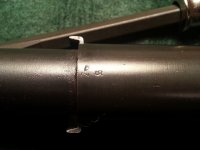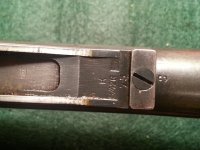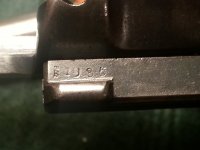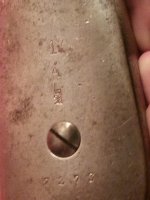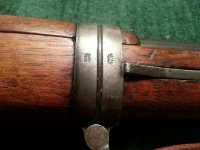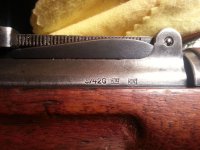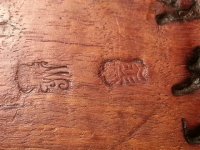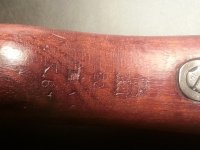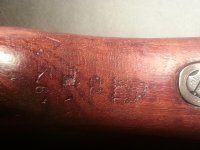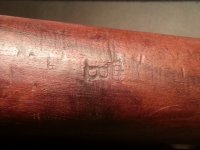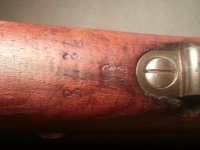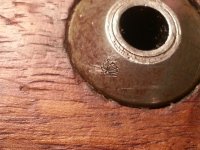Welcome to the forum Nick, been short on internet time the last day or so.... anyway PzjGr covered it well.
The BI-194 is the barrel steel maker and steel lot, Bismarckhütte in modern day Poland, the company was absorbed by Poland in 1920, though remained German owned, more or less, for a number of years. The Poles began to nationalize critical industries right before the war, but they gave German owned firms special attention... The owners brought some American partners in, though I doubt it helped much, the laws in Poland were extremely hostile to Germans, - and the nazis paid them double after 1939.
The 19-35 is probably as PzjGr states, such parts were not always re-numbered if replaced at a lower facility during the war. As for which depot did the work, I can't make much of your pictures, can you do better ones of the wrist and stock markings (all of them)? From what I can see of the depot marking I suspect it went through HZa Kassel (eagle/Ka/30), as the marking looks like their Weimar style eagle/Ka, over "30" which is typical of their work. Hard to be more specific with these pictures, - the barrel is factory original, the stock might be but I would have to see the acceptance pattern. Often these upgraded EWB's have a lot of original parts, some even have their original rear sights and finish, probably because they were taken out of their hiding place rather late and only needed upgrades. (PzjGr is right on that too, the upgrade was entirely due to ammunition, which once the S-patrone was exhausted, the sS patrone became standard, prior to that, 1918-1929, German rifles were dual compliant.)
The reason the German Army relied upon these rifles as long as they did is because Kar.98k production was totally inadequate for the expansion the nazis had in mind, - enormous amounts were spent early on, very little of which went to rifles. A new and shiny Army the nazis had in mind need barracks, airfields and an airforce, - that is where most of the money went at first (that and autarky programs), - the foundation of a large modern Army. Besides, other factors were in play too, - for one German industry had been almost completely de-militarized by 1924, and you do not re-militarize overnight. It takes resources, money and above all time...
A modern and effective military is only possible with a great industrial base and strong economy, - Germany had both though artificially suppressed. It had one of the strongest industrial bases in the world at the time, the Entente couldn't cripple it short of perpetual occupation, as they did in the Ruhr for a time… and Germany's economy was only artificially suppressed 1919-1933, once Hitler lifted those artificial controls, Germany was going to be the central state-power in Europe, easily outstripping France (largest Army in the Europe, though in decline due to political chaos- leftists) and England (still an economic powerhouse at the time- though it too suffering significantly from their politics). This fact played a significant role in both World Wars, - Germany was eventually going to be the dominate power in Central Europe, by the turn of the 20th century it already was economically and both wars were in part a response to this fact.
As both Germany (1933-1939) and the United States (1917 and again in 1940-1941) proved so clearly, great militaries come from a strong and powerful industry and economy (freedom) and countries that maintain powerful militaries only do so on the back of this foundation. (the USSR was a joke militarily and what it achieved in the industrial field was built upon German and American technical knowledge and help 1920-1945, - the highly acclaimed "victories” were only possible with American logistics and resources... the Red Army was incapable of "offensive" operations without American lend lease, even with it it killed more of its own men than Germans... - nazi Germany did it on the back of German industry and nearly lost the war in 1942, before German industrialist pulled their chestnuts out of the fire when Hitler gave them some measure of freedom 1942-1944)

